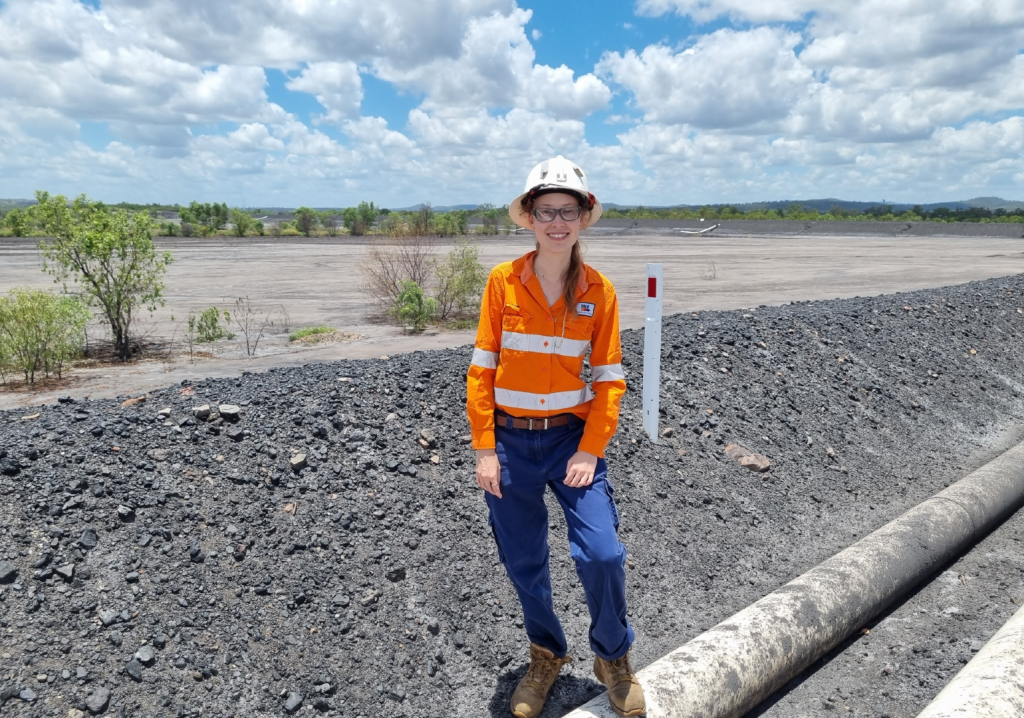Working in dams and tailings management has given this engineering technologist the chance to travel across Australia.
Engineering technologists aren’t your regular engineers. They modify and adapt established engineering practices and advance engineering technology, making the complex accessible for clients and peers.
That’s also an accurate job description of Associate Dams and Tailings Engineer Jodie Kilpatrick TMIEAust CEngT.
Kilpatrick, who was named Emerging Engineering Technologist of the Year at the 2023 Engineers Australia Excellence Awards, has lived and worked across Australia as an employee and consultant in the mining industry, helping operators to increase capacity, raise dam safety standards and boost company culture.
Described by the judges’ panel as building “sincere and valuable relationships within the workplace” and supporting “up-and-coming engineers”, Kilpatrick has shared with create what motivated her early-career jump from science to engineering, how she builds relationships with mining operators, and what she’s proudest of achieving.
Read the full Q&A below.

Tell us about your background and how your career has progressed?
“I was born in a mining town and naturally moved into a graduate role in a mining company after graduating from university. That was good for me because I’ve had the opportunity to work across Australia, in places such as Melbourne, Tasmania, and central and far north Queensland.
“I also made the leap from hydrology and water resources into dam management, primarily tailings dams as they have been highlighted as a risk for the mining industry. This was something of a natural progression from my background in science.
“I’d identified the opportunity to fill gaps within the mining industry, and saw ways to help the industry improve the way it was managing risk. I’ve found a passion for working with people to raise the standard of teams.”
Do you see much of a difference between science and engineering?
“Moving from science to engineering, I’ve seen how they really can and do work together. And it didn’t really feel like too much of a career change. Working in engineering, there is a focus on solving the problems that science has already identified.”
How much effort does it take to drive positive cultural change within operational teams at the facilities where you’re working?
“It’s about taking the time initially to listen to them, and spending time with them to build trust. Some of the more tangible projects I work on include developing training programs, attending inspections, and being available for questions and support. I bring them along on a journey with any kind of designs, remediations or dam safety reviews that are underway with external consultants.
“Dams and tailings management is a very multidisciplinary field, so any challenge is always based on a multidisciplinary approach. There’s hydrology, hydrogeology, hydraulics, geology, civil engineering, geotech and more.
“You need to manage that dynamic environment effectively.”
What are you proudest of achieving across your career?
“Something I’m particularly proud of was a project where my role was to create positive cultural change within a mining company. I assisted operators to build their confidence and knowledge, and brought them up to speed with what the industry recognised as best practice.
“In those kinds of environments, change isn’t something that happens overnight. You need to foster relationships with people as you’re learning about the facility and the specific challenges associated with the dams that you’re managing.
“Working on a single site for three or four years, you gain an awareness of how things have changed from when you first introduced new standards for undertaking a dam integrity inspection, for example, or how deposition should occur at a facility.”
What’s next for you?
“Now that I’m working in a consulting role, I am able to draw from my previous experience when undertaking technical projects. I have the chance to continue to travel and learn from industry professionals. I’ve worked in Western Australia, I’ve gone down to Tasmania again, and I’ve spent a lot of time in rural Queensland.
“I’m currently studying my Master’s degree to continue to upskill in that area. And I’m looking forward to learning more about how to apply the increasing industry standards across the projects I work on.
“I am currently a part of a number of industry inclusion and diversity committees to assist in applying initiatives within the technical field of dam management and engineering. I am looking forward to developing my team based on inclusion and diversity foundations.
“Seeing operators and junior engineers increase their confidence, knowledge and ability is very encouraging.”
Nominations for the 2024 Excellence Awards open in April – learn more here.
